Happy Fourth Of July Weekend;
Safely Enjoy The Outdoors
What’s Happening In Wisconsin's State Parks, Trails,
Forests And Recreation Areas
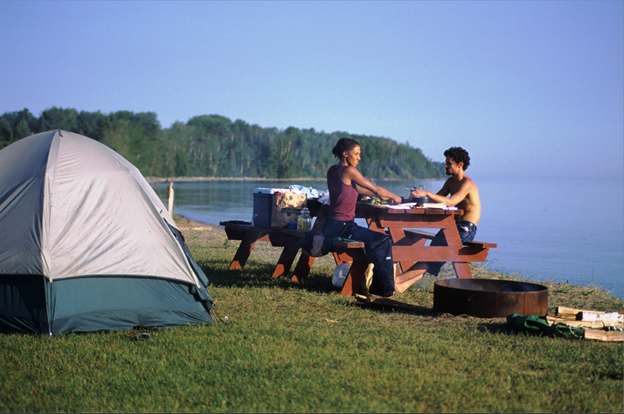 Find your adventure at Wisconsin state parks and give camping a try. Photo credit: Wisconsin DNR
Featured Activity: Camping
Whether using a tent, RV or simply a sleeping bag under stars, there's nothing quite like summer camping in Wisconsin. Cooking dinner over a campfire and fireflies glimmering in the forest all add to the excitement of being outdoors. The range of vehicles, tents and motor homes available provide a range of camping opportunities for any comfort level.
Wisconsin offers several types of camping (not including winter camping, which is in a category all on its own) at more than 6,500 campsites across state parks, forests, and recreation areas. Camping options include:
-
Standard: A typical campsite is in a natural setting with road access, a fire ring and a picnic table available for vehicle or tent campers. A double campsite is two sites connected without obstruction.
-
Group: Outdoor group campsites have picnic tables and fire rings. Most sites are for tents only, but some allow wheeled camping units. A few sites have electrical hookups. Most group sites accommodate 20 to 60 people, but the maximum number of people allowed ranges from 12 to 200. Some properties have indoor group camping.
-
Equestrian: These are adjacent to equestrian riding trails. Campers at these sites must have a horse with them during their stay. Available at 5 properties.
-
Backpack: Backpack campsites may be several hundred yards to a few miles away from the nearest parking area. Campers need to backpack all supplies and gear into and out of these sites. Additionally, there are backpack shelters in the Northern and Southern units of the Kettle Moraine State Forest.
-
Remote: There are a limited number of opportunities for very primitive, remote camping on DNR lands that are not associated with a campground and do not require a reservation fee.
-
Boat-in: These are sites accessible by boat, typically canoe or kayak.
-
Accessible: Accessible (ADA) campsites are available to persons with disabilities. ADA sites typically have a paved driveway and paved pathway leading to an accessible running water restroom/shower building. These sites are intended for use by visitors with qualifying conditions and their family/guests.
The availability of amenities and facilities, like toilets, showers, playgrounds, and potable water, varies from property to property. It's best to read up on the campground you're visiting before leaving home so you can prepare. Some campsites in more rural locations may have limited supply availability. If you need a new challenge with camping, try picking a new type of camping to flex your skills.
At many state campgrounds, firewood is available for sale. Make your Wisconsin State Park System reservation here*.
One thing remains the same across all campsites, either in the Wisconsin park system or elsewhere: you get amazing summer in Wisconsin scenery and access to fresh air, beautiful views, and outside recreation.
*Mosquitoes included free of charge in all campsite reservations.
Did you know: almost 48 million people went camping in 2020, making it one of the most popular activities in the U.S.!
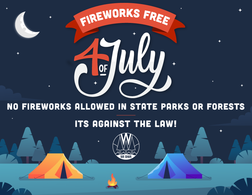
Outdoor News & Announcements
Fireworks Safety at State Parks
Fireworks are prohibited on DNR-managed lands. Restricted areas include state parks, forests and state-owned public hunting and fishing areas.
Fireworks are regulated in Wisconsin, and depending on the specific type of fireworks, a permit may be required. It is best to check with local officials before purchasing them and lighting them.
Anyone using fireworks should take precautions to prevent wildfires. Exploding fireworks, such as firecrackers, m-70s, bottle rockets and Roman candles, cause the most fireworks-related wildfires.
Although holiday favorites such as sparklers and fountains are not defined as fireworks per state law, they do pose a significant fire threat especially near grassy areas in hot and dry weather.
A citation for illegal fireworks in a state park or forest can cost up to $200.50. Violators, or parents of violators, could be responsible for the total costs of extinguishing a fire and up to twice the cost of damages.
Anyone planning on camping in a Wisconsin state park or forest during the Fourth of July weekend should enjoy fireworks displays in nearby communities — not at picnic areas, campsites or other areas within state parks, forests and trails.
More information on preventing wildfires from fireworks or other causes is available on the DNR’s website.
|
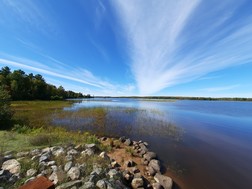
Spotlight on: Turtle-Flambeau Scenic Waters Area
Located in Iron County in northern Wisconsin, the Turtle- Flambeau Scenic Waters Area is 40,000 acres of woods, shoreline, lakes, and islands. The Turtle-Flambeau Flowage is a unique recreational resource and the closest to a wilderness experience that you will find in the state.
Created in 1926 when a dam was built downstream of the confluence of the Flambeau River with the Turtle River, the state took ownership of most of this property in 1990 and has continued to expand state land and shoreline acquisition, protecting this unique landscape.
Top priorities in the Turtle-Flambeau flowage are to preserve its scenic qualities and protect its plant and animal communities while striving to preserve the quality and wealth of outdoor recreational opportunities, including fishing, hunting, camping, nature observation, trapping, boating and canoeing.
The Turtle-Flambeau Scenic Waters Area offers 66 remote campsites accessible by water only and 58 family campsites that do not require registration, a fee or a camping permit. Six of the group sites are available by reservation only and require a fee.
Camping is allowed in designated campsites only. Designated sites have a steel fire ring and an open-air pit toilet and are identified with a site number. Other sites are more rustic and the availability of picnic tables, garbage disposal, and running water varies.
A voluntary quiet area has been established on approximately 20% of the eastern side of the flowage. The quiet area boundaries run from the narrows near Blair Lake upstream to the property boundary, which is near the confluence of the Bear and Manitowish rivers.
The flowage, known for its high density of bald eagles, osprey and common loons, is also home to black terns, merlins, trumpeter swans and over 150 other bird species. In addition, a variety of reptiles and amphibians plus mammals, including deer, bear, bobcat and timber wolves, are found here. There have even been occasional sightings of moose.
Learn more about the Turtle-Flambeau Scenic Waters Area here.
Photos above and below: open skies and a campsite in the Turtle-Flambeau Scenic Area taken by DNR Park Manager Beth Feind. "The Turtle-Flambeau Scenic Waters Area is special to me because of the scenic character of the area, old growth hemlocks, and that it has something for everyone," Feind said.
|
 |
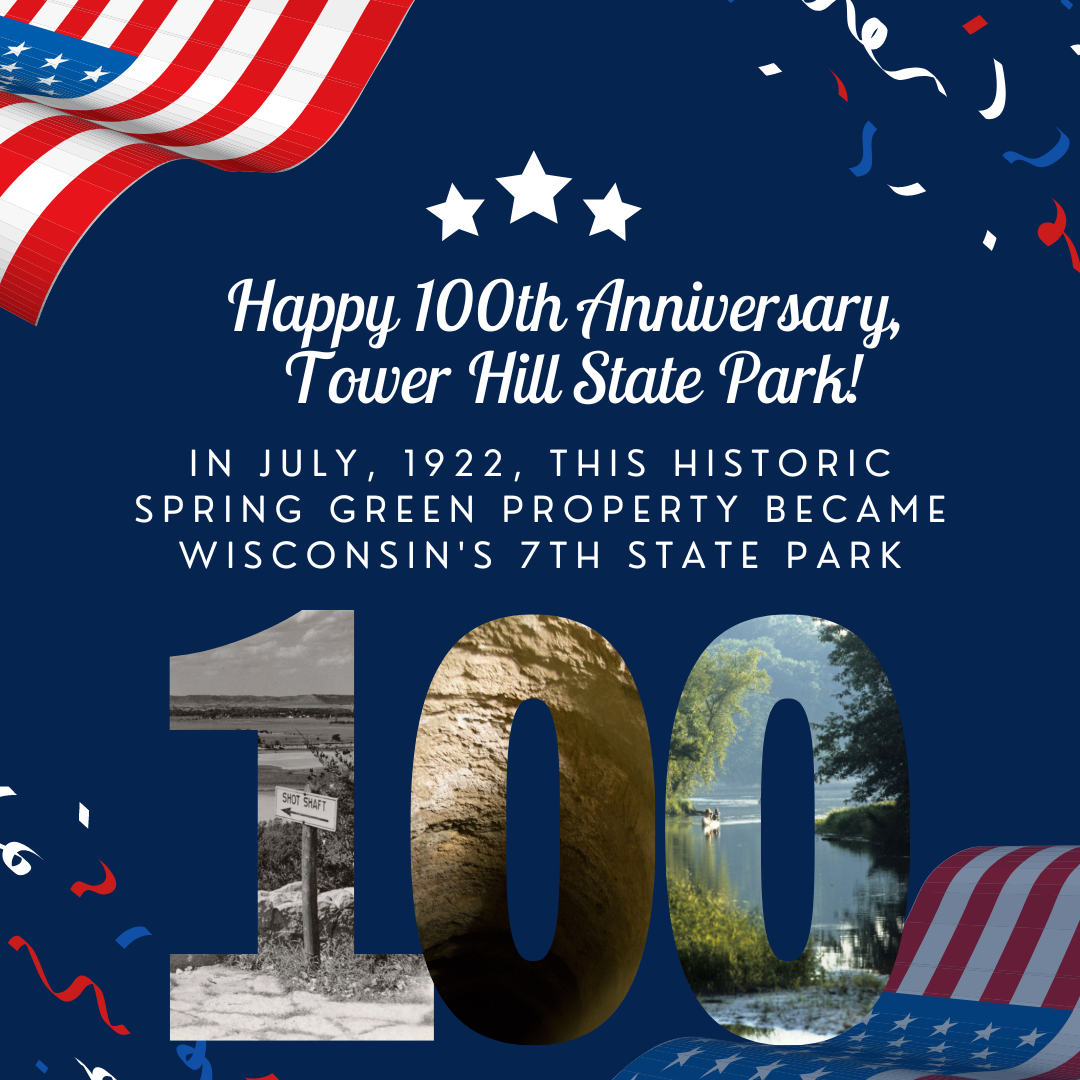
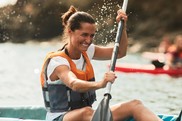
Upcoming Events
Comprehensive Learn to Kayak Adult Day Camp
Kettle Moraine State Forest - Northern Unit
Every Thursday from July 7 - July 28, 6 - 8:30 p.m.
Through this four-week course, learn the ins and outs of flat water kayaking. American Canoe Association instructors will cover selecting a kayak, paddle and other gear, transporting kayaks, flat water strokes, water rescues, places to kayak, and much more. Each evening will provide time on the water to paddle. No equipment or experience required. Cost: $175/person. See more information and register here.
Meet at the Mauthe Lake Recreation Area Picnic Shelter. This is in cooperation with Silent Wake Kayaking.
Find more Nature Programs and DNR events here.
Photo: iStock
|
Leave No Trace
Help us preserve and protect the natural beauty of Wisconsin by following Leave No Trace ethics when you are out at Wisconsin state park properties. These guidelines help decrease the damaging impact we have so everyone may enjoy parks, forests, trails, and recreation areas at their best.
Principle #2: Travel and camp on durable surfaces.
- Durable surfaces include maintained trails and designated campsites, rock, gravel, sand, dry grasses or snow.
- Protect riparian areas by camping at least 200 feet from lakes and streams.
- Good campsites are found, not made. Altering a site is not necessary.
-
In popular areas:
- Concentrate use on existing trails and campsites.
- Walk single file in the middle of the trail, even when wet or muddy.
- Keep campsites small. Focus activity in areas where vegetation is absent.
-
In pristine areas:
- Disperse use to prevent the creation of campsites and trails.
- Avoid places where impacts are just beginning.
Sources: National Park Service and the Ice Age Trail Alliance
Where do you #OutWiGo camping?
When you post pictures of your Fourth of July campsite,
be sure to tag #OutWiGo to share with us!
|